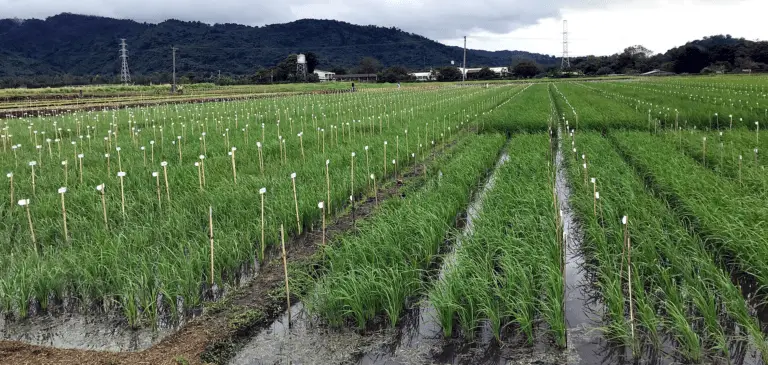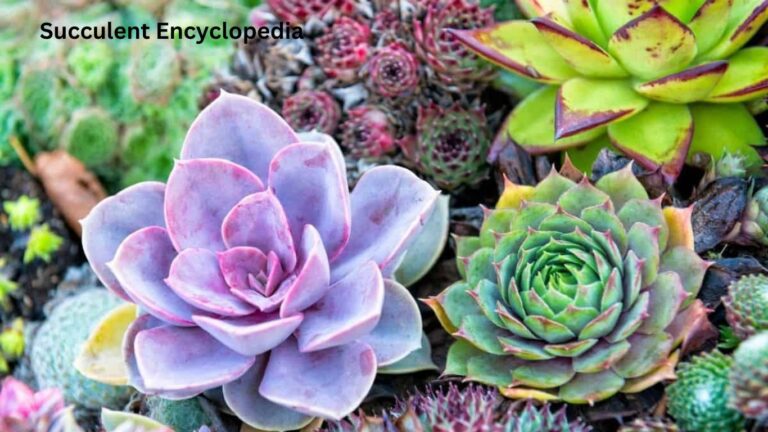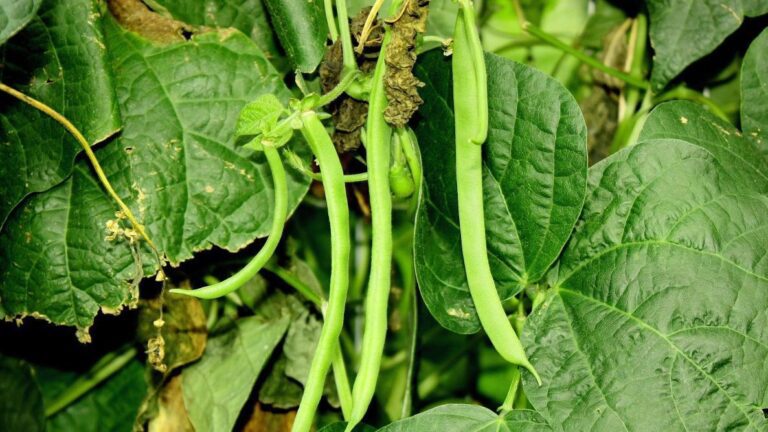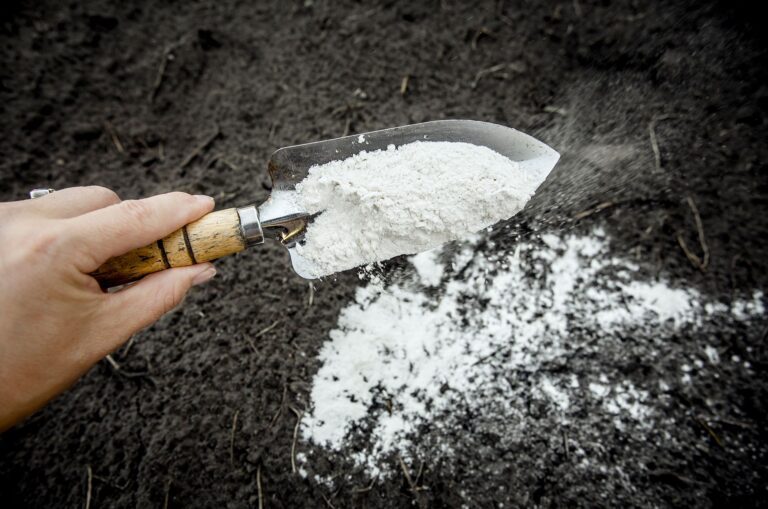Harvest Waste Disposal: How to Dispose of Your Plant Material Safely and Responsibly
Table of Contents
Legal and Regulatory Considerations for Harvest Waste Disposal
Legal and regulatory considerations play a crucial role in the proper disposal of harvest waste. It is important for gardeners and agriculturalists to be aware of the laws and regulations in their respective jurisdictions to avoid any violations and potential penalties. Different countries and regions may have specific guidelines and restrictions regarding the disposal of plant material, especially in cases where the waste may pose environmental or public health risks.
In many cases, composting and mulching are considered eco-friendly and sustainable methods of plant material disposal. However, there may be certain legal restrictions on the types of material that can be composted or used as mulch, as well as regulations on the location and design of composting facilities. Additionally, the use of certain chemicals or pesticides in the gardening or agricultural process may require specific disposal practices to minimize environmental contamination. It is crucial for individuals to familiarize themselves with these regulations and ensure that they are in compliance to contribute to a greener and more sustainable future.
Identifying Different Types of Harvest Waste
Identifying Different Types of Harvest Waste
When it comes to managing harvest waste, it is important to first understand the different types of waste that can be produced. Identifying these types of waste will help gardeners and farmers determine the most effective disposal methods and ensure that they are being environmentally responsible.
One common type of harvest waste is plant material, which includes stems, leaves, branches, and roots that are left behind after harvesting crops or pruning trees. This type of waste can be composted or used for mulching, providing valuable nutrients and organic matter for the soil. Another type of waste is agricultural by-products, such as straw, husks, and hulls, which are typically generated during the processing of crops. These by-products can be used for livestock feed or bedding, or even converted into biofuels.
Additionally, there are certain types of waste that require special consideration due to their potential harm to the environment. These include hazardous materials such as chemicals and pesticides, as well as diseased or infested plant material. Proper disposal of these types of waste can help prevent contamination of soil and water sources, ultimately protecting both human health and the ecosystem. Lastly, genetically modified organisms (GMOs) are another type of waste that needs to be handled with care, as their disposal may involve specific protocols to ensure their containment and prevent their unintended spread.
By recognizing and categorizing the different types of harvest waste, gardeners and farmers can make informed decisions about how to dispose of their waste responsibly. This knowledge forms the foundation for implementing sustainable methods that not only reduce waste but also contribute to a healthier and more resilient ecosystem.

Sustainable Methods for Plant Material Disposal
Sustainable disposal of plant material is a crucial aspect of responsible gardening and agriculture. It not only helps reduce waste but also allows for the recycling and repurposing of valuable organic matter. By implementing sustainable methods for plant material disposal, gardeners and farmers can contribute to a healthier environment and promote the long-term viability of their land.
One of the most popular and eco-friendly options for plant material disposal is composting. Composting involves the decomposition of organic waste, such as leaves, grass clippings, and plant trimmings, into nutrient-rich compost. This compost can then be used to enrich the soil, improve its fertility, and promote healthy plant growth. Composting not only reduces the volume of waste but also eliminates the need for synthetic fertilizers, thus minimizing environmental pollution. Backed by scientific research, composting has been recognized as an effective and sustainable method for managing plant waste.
| Key Points | Implications/Advantages |
|---|---|
| Composting is an eco-friendly disposal option | – Promotes sustainable waste management |
| Decomposition of organic waste into compost | – Produces nutrient-rich compost for soil enrichment |
| Compost can be used to promote healthy plant growth | – Enhances soil fertility and structure |
| Reduces waste volume and eliminates synthetic fertilizers | – Environmentally friendly and reduces dependence on chemicals |
| Scientific research supports composting | – Proven effectiveness and sustainability based on research |
This table provides a concise overview of the key advantages and implications of composting as an eco-friendly option for plant material disposal, highlighting its role in sustainable waste management and promoting healthy plant growth.
Composting: A Natural and Eco-Friendly Option
Composting is a natural and eco-friendly option for disposing of harvest waste. It is a process that involves decomposing organic materials, such as plant trimmings and food scraps, in a controlled environment to create nutrient-rich compost. This compost can then be used as a natural fertilizer to improve soil health and promote plant growth.
One of the major benefits of composting is that it reduces the amount of waste that ends up in landfills. According to the Environmental Protection Agency (EPA), food scraps and yard waste make up about 30% of what we throw away, and composting can divert a significant portion of this waste from landfills. By composting our harvest waste, we can reduce greenhouse gas emissions and promote a more sustainable waste management system.
Composting is also beneficial for the environment because it helps improve soil quality and retain moisture. When compost is applied to soil, it enriches it with essential nutrients and beneficial microorganisms. This improves soil structure, increases its ability to hold water, and promotes healthy root growth. Additionally, compost can help suppress plant diseases and pests, reducing the need for synthetic fertilizers and pesticides.
Overall, composting is a simple and effective way to dispose of harvest waste while promoting environmental sustainability. By implementing composting practices in our gardens, farms, and communities, we can contribute to a healthier and more resilient ecosystem.
Mulching: Using Plant Waste to Benefit Your Garden
Mulching is a beneficial practice that can help gardeners make the most of their plant waste while improving the health and productivity of their gardens. By using plant waste, such as leaves, grass clippings, and small branches, as mulch, gardeners can create a protective layer that retains moisture, suppresses weed growth, and adds organic matter to the soil. This not only reduces the need for chemical fertilizers and herbicides but also promotes a healthier and more sustainable gardening environment.
One of the key benefits of mulching is its ability to conserve moisture in the soil. The layer of mulch acts as a barrier, preventing evaporation and reducing the amount of water needed for irrigation. In fact, studies have shown that mulching can reduce water loss by up to 50%. Additionally, the organic matter in mulch improves soil structure, allowing it to retain water more effectively. This is especially important in drought-prone areas or during periods of water restriction, as it helps gardeners maintain healthy plants even with limited water resources. By utilizing plant waste as mulch, gardeners can not only reduce their water consumption but also contribute to water conservation efforts in their community.

Recycling Plant Material: Innovative Techniques and Applications
Recycling plant material is an innovative approach to waste management that promotes sustainability and reduces the environmental impact of the gardening and agricultural industries. By repurposing plant waste, valuable resources can be conserved and utilized in a variety of applications.
One effective technique for recycling plant material is through the process of bioconversion. This involves breaking down organic matter into nutrient-rich compost or biogas through the action of microorganisms. Composting, for example, is a natural and eco-friendly option that decomposes plant waste into a nutrient-dense soil amendment. This compost can then be used to enrich garden beds, nourish potted plants, or improve soil fertility in agricultural fields. Additionally, biogas produced from the anaerobic digestion of plant material can serve as a renewable energy source for heating or electricity generation.
Another innovative application of recycling plant material is the production of sustainable packaging materials. With the increasing demand for environmentally-friendly alternatives to traditional packaging, plant-based materials offer a viable solution. Fibers from various plant sources, such as sugarcane or bamboo, can be processed to create biodegradable packaging materials that are both versatile and eco-friendly. By utilizing plant waste to produce packaging, the reliance on non-renewable resources can be reduced, leading to a more sustainable and circular economy.

Responsible Disposal of Hazardous Plant Material
Hazardous plant materials can pose a significant risk to human health and the environment if they are not disposed of properly. When it comes to chemicals and pesticides, it is crucial to follow safe handling and disposal practices to minimize any potential harm. This includes reading and adhering to the manufacturer’s instructions, wearing appropriate protective gear, and storing them in a secure place away from children and pets. When it comes time to dispose of these materials, it is important to check with local regulations to determine the proper method. In some cases, there may be designated collection sites or special disposal procedures in place to ensure these hazardous substances do not end up in landfills or contaminate water sources.
Another issue to consider is how to deal with diseased or infested plant material. These can include plants affected by pests or diseases that can spread to healthy plants if not handled properly. To prevent further contamination, it is best to remove and destroy the affected plant material promptly. This can include burning it, burying it in a deep hole, or bagging it securely and sending it to a local landfill. It is important to note that composting diseased or infested plant material is generally not recommended unless you have a hot composting system that can reach temperatures high enough to kill pathogens or pests.
Chemicals and Pesticides: Safe Handling and Disposal Practices
Chemicals and pesticides play a crucial role in maintaining healthy gardens and farms by controlling pests and ensuring optimal plant growth. However, it is equally important to prioritize safe handling and proper disposal practices when it comes to these substances.
Safe handling of chemicals and pesticides begins with following instructions provided by the manufacturers. Always wear appropriate protective gear such as gloves, goggles, and masks to minimize exposure. When mixing or diluting these substances, do so in a well-ventilated area and avoid inhaling fumes. It is also essential to store chemicals and pesticides in their original containers, clearly labeled and away from children or pets. Educating yourself about the proper techniques and precautions for handling these substances will help protect both yourself and the environment.
Disposing of chemicals and pesticides requires careful attention to regulations and guidelines set by local authorities. Pouring them down the drain, toilet, or directly into soil can lead to contamination of water sources and harm ecosystems. Instead, contact your local waste management or environmental agency for information on proper disposal methods. They may point you towards designated collection sites or assist in coordinating chemical pick-up services. By adhering to safe handling and disposal practices, you can contribute to a healthier and more sustainable gardening community.

Dealing with Diseased or Infested Plant Material
Dealing with diseased or infested plant material is a crucial aspect of responsible garden and farm management. When it comes to plant diseases, prevention is always better than cure. Implementing good cultural practices such as proper sanitation, crop rotation, and maintaining healthy soil can significantly reduce the risk of diseases and pests spreading. However, when an infestation or disease does occur, it is important to take appropriate measures to minimize its impact and prevent further spread.
One of the first steps in dealing with diseased or infested plant material is the swift removal and destruction of affected plants. This helps to contain the problem and prevent it from spreading to healthy plants. Burning the infected plant material is often recommended, as it ensures complete destruction and reduces the risk of spread through composting or mulching. However, it is essential to adhere to local regulations and guidelines regarding the disposal of plant pathogens.
Proper Disposal of Genetically Modified Organisms (GMOs)
Proper disposal of genetically modified organisms (GMOs) is essential to ensure environmental safety and prevent potential risks associated with their release into the ecosystem. As GMOs are engineered with genetic material from different species, it is crucial to handle and dispose of them responsibly to minimize any unintended consequences.
One effective method for disposing of GMOs is through high-temperature incineration. Incineration facilities equipped with advanced technology can break down genetic material and destroy the organisms, rendering them inert and preventing their spread. This method ensures that GMOs are completely eradicated while also reducing the risk of cross-contamination.
Another approach to dispose of GMOs is through deep burial. This method involves burying the GMOs in designated sites that are carefully selected to prevent their escape and minimize any potential ecological impact. By isolating GMOs underground, the likelihood of their interaction with other organisms is significantly reduced.
Overall, proper disposal of GMOs is crucial to prevent unintended consequences and safeguard the environment. Effective methods such as incineration and deep burial can help ensure the responsible management of GMOs, limiting their potential impact and preserving the integrity of natural ecosystems.

Community Initiatives and Resources for Harvest Waste Disposal
Community initiatives and resources play a vital role in the proper disposal of harvest waste. As gardening enthusiasts, we have the opportunity to connect with local organizations and individuals who share a passion for sustainable waste management. These initiatives offer a range of solutions that not only reduce the environmental impact of harvest waste but also provide valuable resources for our gardening endeavors.
One valuable resource for harvest waste disposal is the availability of local composting facilities and recycling centers. Many communities have designated locations where gardeners can bring their plant material for composting or recycling. These facilities ensure that the organic matter is properly processed and transformed into nutrient-rich compost, which can then be used to enrich our soil and support healthy plant growth. Additionally, recycling centers can handle other types of plant waste, such as plastic containers or packaging materials, reducing the amount of waste that ends up in landfills.
Another way to promote sustainable waste management is by collaborating with farmers and fellow gardeners. By joining forces, we can create a network of like-minded individuals who are dedicated to responsible harvest waste disposal. This collaboration can include sharing information about composting techniques, organizing community composting initiatives, or simply exchanging plant material that can be used as mulch or compost. Together, we can make a significant impact in reducing waste and promoting the health of our gardens and the environment.
| Key Points | Implications/Actions |
|---|---|
| Community initiatives for harvest waste disposal | – Promote collaborative efforts within the community |
| Establishing collection points for harvest waste | – Centralized locations for easy disposal and collection |
| Implementing composting programs | – Convert waste into nutrient-rich compost for community use |
| Encouraging local farmers to participate | – Active involvement increases the effectiveness of disposal programs |
| Providing educational resources on composting | – Promotes awareness and educates community members on proper methods |
| Collaborating with local composting facilities | – Utilize existing infrastructure for efficient waste processing |
| Creating awareness campaigns about sustainable practices | – Encourage responsible waste disposal within the community |
| Connecting with local gardening or agricultural groups | – Foster partnerships for resource sharing and waste utilization |
This table provides a concise overview of key actions and considerations for community initiatives and resources focused on harvest waste disposal. It emphasizes collaborative efforts, education, and the utilization of existing infrastructure to enhance the effectiveness of waste management programs.
Local Composting Facilities and Recycling Centers
Local composting facilities and recycling centers provide valuable resources for gardeners and homeowners looking to dispose of their plant waste in an eco-friendly manner. Composting, in particular, offers a natural and sustainable solution for managing organic material. These facilities take in plant waste and use a controlled process to break it down into nutrient-rich compost that can be used to enrich soil and enhance plant growth.
By utilizing local composting facilities, gardeners not only reduce the amount of waste sent to landfills but also contribute to the creation of a valuable soil amendment. Compost is known for its ability to improve soil structure, retain moisture, and sustain beneficial microorganisms, all of which are crucial for healthy plant growth. Moreover, composting significantly reduces greenhouse gas emissions compared to sending organic waste to landfills, thereby mitigating the environmental impact.
Recycling centers also play a vital role in responsible waste management by collecting and processing non-organic plant materials such as plastic pots, trays, and packaging. Gardeners can bring these items to recycling centers, where they will be properly sorted, processed, and recycled into new products. This helps to conserve natural resources, reduce energy consumption, and minimize the environmental footprint associated with the production and disposal of these materials.
The availability of local composting facilities and recycling centers provides gardeners with convenient and sustainable options for managing their plant waste. By utilizing these resources, individuals can contribute to the circular economy of organic and non-organic materials, supporting the overall sustainability of their communities.
Collaborating with Farmers and Gardeners for Sustainable Waste Management.
Collaborating with farmers and gardeners is a vital aspect of sustainable waste management. By working together, we can not only maximize the potential of plant waste disposal but also promote a more eco-friendly and efficient approach.
One way to collaborate is by establishing community composting programs. By pooling together plant waste from various sources, such as farms, community gardens, and individual households, a centralized composting facility can be developed. This facility can efficiently process and transform the plant material into nutrient-rich compost, which can then be used to improve soil health in farms and gardens. Furthermore, the sharing of resources and knowledge among farmers and gardeners can lead to better composting practices and a more effective use of the end product.
Another avenue for collaboration is the establishment of plant waste recycling initiatives. By promoting the recycling of plant material, we can reduce the amount of waste that ends up in landfills. This can be achieved by organizing collection points where farmers and gardeners can deposit their plant waste, which is then processed by recycling centers into useful products such as mulch or biomass for energy production. By actively participating in these recycling efforts, farmers and gardeners not only contribute to sustainable waste management but also support the circular economy by minimizing waste and maximizing resource utilization.
Are there any legal requirements for disposing of harvest waste?
Yes, there are legal and regulatory considerations for harvest waste disposal. These may vary depending on the specific region or country you are in. It is important to familiarize yourself with local laws and regulations to ensure responsible waste management.
What are the different types of harvest waste?
Harvest waste can include plant trimmings, leftover crops, diseased or infested plant material, and genetically modified organisms (GMOs). Each type of waste may require different disposal methods.
What are some sustainable methods for plant material disposal?
Sustainable methods for plant material disposal include composting, mulching, and recycling. These methods help reduce waste, enrich the soil, and promote environmental sustainability.
How does composting work as a waste management option?
Composting is a natural and eco-friendly option for waste management. It involves the decomposition of organic materials, such as plant trimmings and leftover crops, into nutrient-rich compost that can be used to improve soil fertility.
How can mulching benefit my garden?
Mulching involves using plant waste, such as leaves or straw, to cover the soil surface. It helps retain moisture, suppress weed growth, and improve soil quality by slowly decomposing and releasing nutrients into the soil.
What are some innovative techniques and applications for recycling plant material?
There are various innovative techniques and applications for recycling plant material. These may include using plant waste for bioenergy production, creating biodegradable packaging materials, or developing new products from recycled plant fibers.
How should hazardous plant material be responsibly disposed of?
Hazardous plant material, such as chemicals and pesticides, should be handled and disposed of safely. This may involve following specific guidelines from regulatory agencies, using designated disposal methods, and ensuring proper labeling and storage.
What are the best practices for handling and disposing of chemicals and pesticides?
When dealing with chemicals and pesticides, it is important to follow safe handling practices, such as wearing protective gear, storing them in designated containers, and disposing of them according to local regulations. Contact local authorities for specific guidelines.
How should diseased or infested plant material be dealt with?
Diseased or infested plant material should be handled carefully to prevent the spread of pests or diseases. Depending on the specific situation, it may involve burning the material, burying it deep in the ground, or using specific treatments recommended by experts.
What is the proper disposal method for genetically modified organisms (GMOs)?
Proper disposal of genetically modified organisms (GMOs) may require specific protocols to prevent their unintended release into the environment. It is essential to consult with regulatory authorities or experts for guidance on how to safely dispose of GMOs.
Are there local resources available for harvest waste disposal?
Yes, communities often have initiatives and resources for harvest waste disposal. These may include local composting facilities, recycling centers, or collaborations with farmers and gardeners who practice sustainable waste management. Contact local authorities or organizations for information on available resources.

Beck Wakeford is a dedicated writer at SouthElMonteHydroponics, with a fervent enthusiasm for agriculture and technological innovation. Armed with a degree in Agricultural Engineering from a leading university, Beck specializes in hydroponic systems design, automation, and optimization. Their passion for merging traditional farming with cutting-edge technology drives them to explore novel solutions for sustainable food production. Beck’s expertise and keen interest in the intersection of engineering and agriculture make them a valuable asset in the quest for efficient and eco-friendly farming practices. Through their writing, Beck aims to inspire others to embrace the potential of hydroponics in shaping a more sustainable future.






